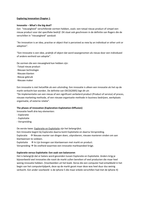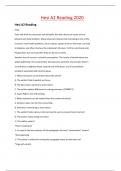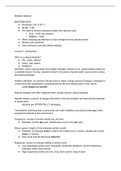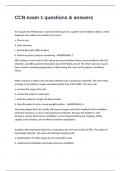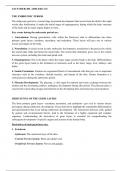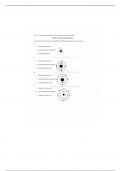Following Migrant Trajectories: The Im/Mobility of Sub-Saharan Africans en Route to the European Union
Author(s): Joris Schapendonk and Griet Steel
Source: Annals of the Association of American Geographers , March 2014, Vol. 104, No. 2, SPECIAL ISSUE:
Migration (March 2014), pp. 262-270
Published by: Taylor & Francis, Ltd. on behalf of the Association of American Geographers
Introduction
Migration has been researched in a way that there’s two fixed points, A and B, the push and the full
and the original place and the destination. Migration has been fixed on these two places and not
elsewhere.
“"sedentarist meta physics" (Malkki 1992; Cresswell 2006). In other words, migration has mainly
been studied from the position of fixed locations: the A and the B, the push and the pull, the
place of origin and the destination. As a result, mobility processes have generally been reduced to
residual in-between phases between two locations, and the migrants in question have been
approached as moving from one state of fixity (in the place of origin) to another (in the
destination).”
The transnational turn to migration, idea of simultaneously living across more than one place, made
the sedentarism seem incorrect. It focusses on migrants’ connections to geographical, cultural and
political boundaries. Less attention is paid to the spatial frictions in mobility processes and there is
more attention on transnational engagements and networks.
“The transnational turn (e.g., Click Schiller, Basch, and Blanc-Szanton 1995; Portes 1997), however, de bunked
this notion. By focusing on migrants' multiple relationships that cross geographical, cultural, and political
boundaries, transnationalism positions mi grants in two places simultaneously (the sending and the receiving
country)… Moreover, whereas much emphasis is put on transnational engagements and networks, less
attention is paid to experiences of mobility and spatial frictions in mobility processes, let alone to the journeys
between places of departure and arrival (Burell 2008; Schapendonk 2011).” (page 262)
The Sudanese and the Nigerian migrants heading for the EU are examples of sub-Saharan African
communities being interconnected from globalisation and it also shows how restricting EU migration
policies are.
“Although the trajectories of these two migrant groups are situated in different sociopolitical contexts, both
exemplify the increasing connectivity of sub-Saharan African societies in terms of globalization, triggering
people's aspirations to reach other places (Appadurai 2001), as well as the increasingly restrictive European
migration policies that aim to immobilize potential immigrants (Van Houtum 2010).” (page263)
An Im-Mobilities Approach to Migration (page 263-264)
Mobility and immobility are not complete opposites but are interrelated. The power ridden factors of
mobility shows the differences in terms of access and so mobility potential depends on peoples
position in time and space.
“mobilities scholars argue that mobility and immobility are not unconnected opposites but are instead
interrelated effects. This implies that they pay attention to the role of fixed infrastructures, networks, and
places in mobility processes, as well as to intersecting periods of rest and blocked mobilities… The political and
power-ridden character of im/mobility reflects differences in terms of access and speed and articulates that
the mobility potential of people depends very much on their positionality in time and space (Sheppard 2002;
Massey 200).”
Author(s): Joris Schapendonk and Griet Steel
Source: Annals of the Association of American Geographers , March 2014, Vol. 104, No. 2, SPECIAL ISSUE:
Migration (March 2014), pp. 262-270
Published by: Taylor & Francis, Ltd. on behalf of the Association of American Geographers
Introduction
Migration has been researched in a way that there’s two fixed points, A and B, the push and the full
and the original place and the destination. Migration has been fixed on these two places and not
elsewhere.
“"sedentarist meta physics" (Malkki 1992; Cresswell 2006). In other words, migration has mainly
been studied from the position of fixed locations: the A and the B, the push and the pull, the
place of origin and the destination. As a result, mobility processes have generally been reduced to
residual in-between phases between two locations, and the migrants in question have been
approached as moving from one state of fixity (in the place of origin) to another (in the
destination).”
The transnational turn to migration, idea of simultaneously living across more than one place, made
the sedentarism seem incorrect. It focusses on migrants’ connections to geographical, cultural and
political boundaries. Less attention is paid to the spatial frictions in mobility processes and there is
more attention on transnational engagements and networks.
“The transnational turn (e.g., Click Schiller, Basch, and Blanc-Szanton 1995; Portes 1997), however, de bunked
this notion. By focusing on migrants' multiple relationships that cross geographical, cultural, and political
boundaries, transnationalism positions mi grants in two places simultaneously (the sending and the receiving
country)… Moreover, whereas much emphasis is put on transnational engagements and networks, less
attention is paid to experiences of mobility and spatial frictions in mobility processes, let alone to the journeys
between places of departure and arrival (Burell 2008; Schapendonk 2011).” (page 262)
The Sudanese and the Nigerian migrants heading for the EU are examples of sub-Saharan African
communities being interconnected from globalisation and it also shows how restricting EU migration
policies are.
“Although the trajectories of these two migrant groups are situated in different sociopolitical contexts, both
exemplify the increasing connectivity of sub-Saharan African societies in terms of globalization, triggering
people's aspirations to reach other places (Appadurai 2001), as well as the increasingly restrictive European
migration policies that aim to immobilize potential immigrants (Van Houtum 2010).” (page263)
An Im-Mobilities Approach to Migration (page 263-264)
Mobility and immobility are not complete opposites but are interrelated. The power ridden factors of
mobility shows the differences in terms of access and so mobility potential depends on peoples
position in time and space.
“mobilities scholars argue that mobility and immobility are not unconnected opposites but are instead
interrelated effects. This implies that they pay attention to the role of fixed infrastructures, networks, and
places in mobility processes, as well as to intersecting periods of rest and blocked mobilities… The political and
power-ridden character of im/mobility reflects differences in terms of access and speed and articulates that
the mobility potential of people depends very much on their positionality in time and space (Sheppard 2002;
Massey 200).”

